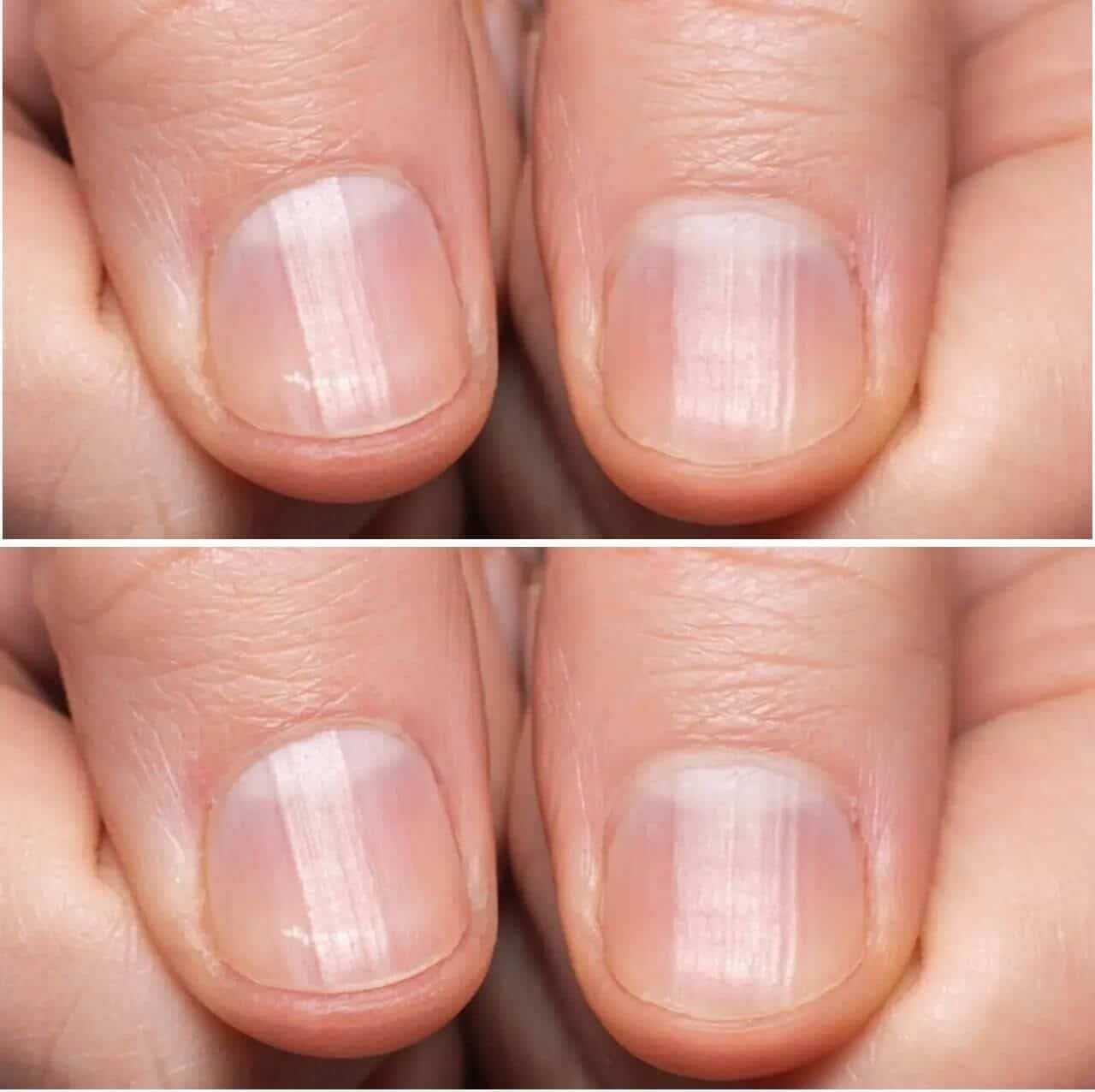Striped nails—lines, grooves, or ridges running across your fingernails or toenails—can reveal more than you might think. From faint, barely visible lines to pronounced indentations, these patterns can sometimes signal your overall health. Let’s explore what different types of striped nails could mean and how to respond.
1. Vertical Ridges: A Common Part of Aging
Vertical ridges run from the base to the tip of your nails and are usually harmless.
What It Could Mean:
- Aging: Nail growth slows and becomes uneven over time, creating these lines.
- Mild Dehydration: Not drinking enough water can subtly affect nail health.
- Nutrient Deficiency: Low levels of biotin, iron, or zinc may contribute to ridges.
What to Do:
- Drink plenty of water daily.
- Eat a balanced diet with fruits, vegetables, lean protein, and whole grains.
- Consider supplements like biotin after consulting your doctor.
- Use a gentle nail buffer for a smoother look, but avoid over-buffing.
2. Horizontal Ridges (Beau’s Lines): Signs to Watch
Horizontal ridges run across the nail and may indicate a past health event.
What It Could Mean:
- Illness or Stress: Severe illness, fever, or stress can temporarily halt nail growth.
- Nutritional Deficiency: Low zinc, iron, or protein levels may cause these lines.
- Underlying Conditions: Thyroid issues, diabetes, or circulation problems could be linked.
What to Do:
- Consult a doctor to rule out health issues.
- Prioritize nutrient-rich foods.
- Keep nails trimmed and moisturized.
3. White Stripes or Spots: Possible Mineral Imbalance
White lines or spots may signal nutrient concerns or rare organ issues.
What It Could Mean:
- Zinc or Protein Deficiency: Both are vital for healthy nails.
- Liver or Kidney Problems: Persistent white lines may warrant medical attention.
What to Do:
- Eat zinc-rich foods like pumpkin seeds, chickpeas, and seafood.
- Include lean proteins like chicken, eggs, or lentils.
- Consult a healthcare professional if the white lines persist.
4. Dark Stripes or Discoloration: Seek Urgent Medical Advice
New or changing dark stripes require immediate evaluation.
What It Could Mean:
- Melanonychia: Increased melanin can cause dark vertical stripes; some cases are harmless.
- Nail Melanoma: Rare, but dark stripes can signal skin cancer beneath the nail.
What to Do:
- See a dermatologist or doctor immediately.
- Monitor changes in stripe width, color, or texture.
5. Brittle or Grooved Nails with Stripes: Hormonal or Thyroid Concerns
Brittle nails with deep ridges may indicate hormone or thyroid issues.
What It Could Mean:
- Hypothyroidism: Underactive thyroid can make nails brittle.
- Hormonal Changes: Pregnancy, menopause, or imbalances affect nail growth.
What to Do:
- Get thyroid function checked if you have fatigue, weight changes, or hair loss.
- Maintain a healthy diet and follow prescribed treatments if diagnosed.
General Tips for Strong, Healthy Nails
- Moisturize with cuticle oil or hand cream to prevent dryness.
- Avoid harsh chemicals, excessive filing, or nail-biting.
- Eat foods rich in biotin, iron, zinc, and omega-3 fatty acids.
- Stay hydrated to support nail health.
- Monitor nail changes and consult a doctor if needed.
When to Seek Professional Advice
Consult a doctor if striped nails come with fatigue, hair loss, skin changes, or pain. Tests can reveal nutrient deficiencies, hormonal imbalances, or systemic conditions affecting your nails.
Final Thoughts
Striped nails are often harmless but can provide insight into your health. By paying attention to nail changes and addressing underlying issues, you can protect both your nails and your overall well-being.
Have you noticed unusual stripes on your nails or discovered tips for keeping nails strong? Share your experiences below!
